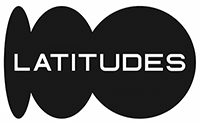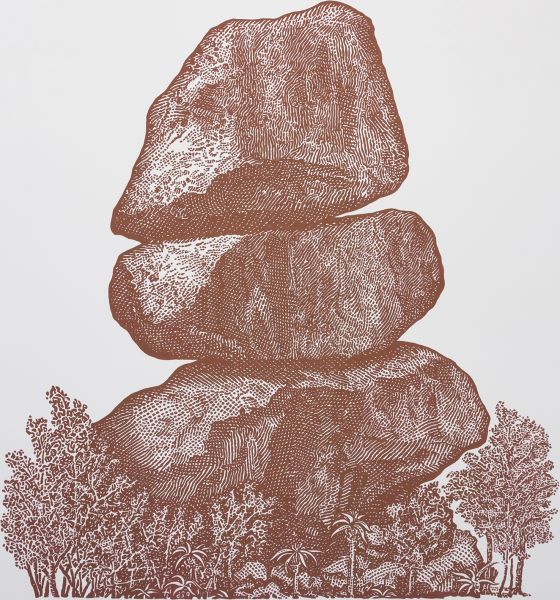Domboremari (Bronze)
Store Review (0)PRESENTED BY : Warren Editions
| Frame | None |
|---|---|
| Edition Size | 6 |
| Medium | Linocut on Zerkall Litho 300gsm |
| Location | Warren Editions |
| Height | 100.00 cm |
| Width | 81.00 cm |
| Artist | Dan Halter |
| Year | 2017 |
Dan Halter’s large linocut series, Domboremari, is based on an engraving of the balancing rocks found in the southeast of Harare, off the Chiremba Road, which achieved fame as a prominent feature on most Zimbabwean banknotes. Four different sets of this currency were issued, owing to the hyperinflation in Zimbabwe resulting in the need to re-denominate the currency, and the notes were printed in numerous colours.
Use of the Zimbabwean dollar as an official currency was effectively abandoned in 2009. Since then, a variety of currency is accepted there, although most transactions are conducted with US dollars. Recently, the circulation of US dollars has begun to dwindle. As a result, the Reserve Bank of Zimbabwe has reintroduced local bond notes. This idea has been very controversial in light of what happened to the previous legal tender, which peaked in 2008 and left every citizen a poor billionaire.
At the height of inflation, one US dollar could fetch 300 trillion Zimbabwean dollars on the black market. The largest banknote was Z$100 trillion. These banknotes are now available to purchase as collector’s objects at tourist hubs such as Green Market Square in Cape Town, or online from Banknote World, Great American Coin Company, One Hundred Trillions and Google.
Halter carved his image in linoleum flooring over a period of a month. Warren Editions has published a total of six editions each in a particular colour – referencing colours used on the bank notes. The title, Domboremari, is Shona and means ‘the money rocks’.
With a linocut the negative areas that are not printed are removed, using carving tools, leaving these areas of the matrix in relief. The raised surface of the matrix receives the ink. Ink is rolled onto this raised positive surface using a brayer or roller, and the image is then printed onto paper. The area below the surface, which does not receive ink, will remain the colour of the paper.







